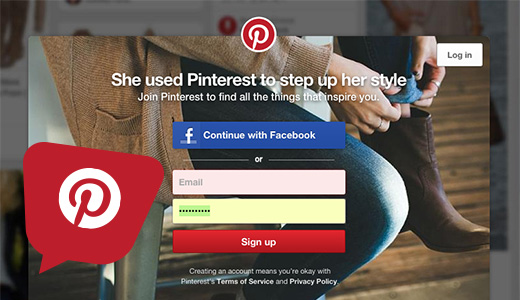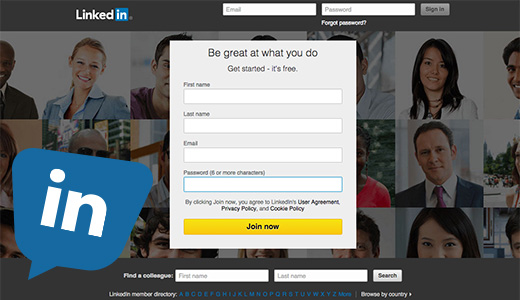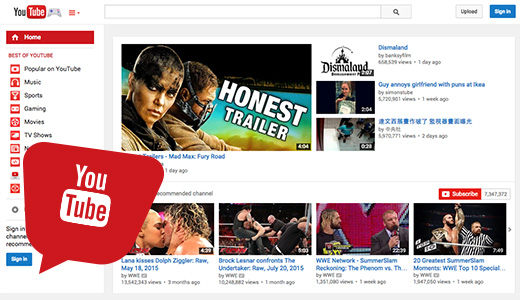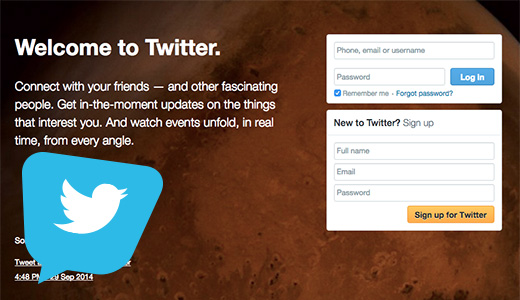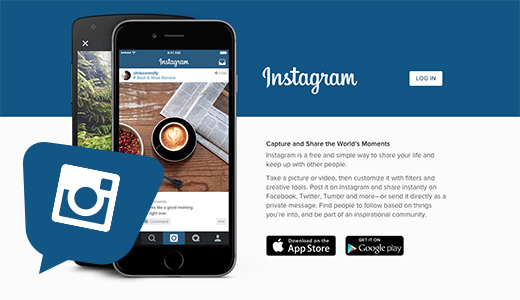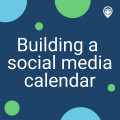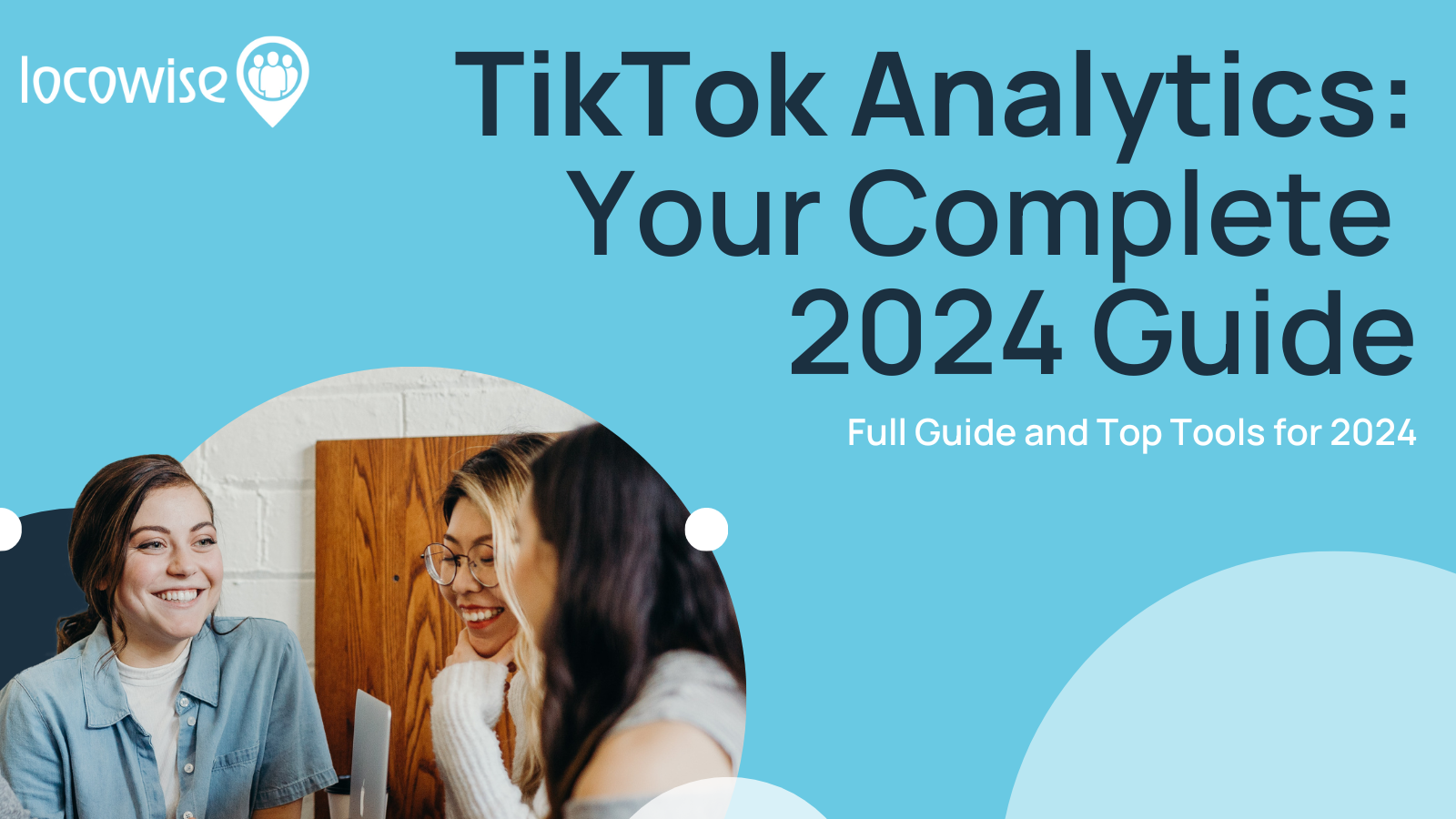You’re not stupid, you know your business should be on social media, but there are so many platforms to choose from and get involved with, isn’t it just a case of getting on every platform and giving it a shot?
Which Social Platforms Are Right For Your Business? – A Comprehensive Guide
Sahail Ashraf posted on 27 August 2015
It really isn’t, and in this guide we hope to give you and your business the skinny on which social media platforms would probably best suit you and your needs. But first, a couple of pointers to get you in the right frame of mind.
When you are looking at choosing a social media platform or two to get started on, you need to consider two distinct factors. The first is your audience. There is no point choosing a platform that has an audience that has no connection to you. They’ll just ignore what you put out at best, and at worst, they’ll probably view you as an annoyance.
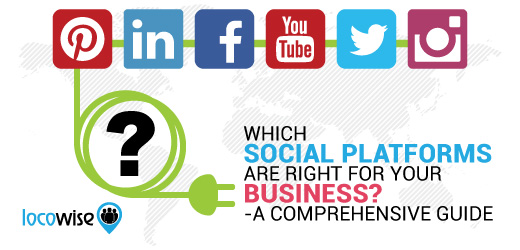
Also, if you are looking to get your content out there and you specialise in high quality video, this narrows down your social media platform search to a degree. YouTube, for example, is a more natural home than Twitter.
So we will look at each platform first of all, and get a feel for how they work, and we will describe the characteristics of the audience, and what kind of content they like to see, hear and experience on the platform.
Pinterest has always been seen as a content sharing service, both by its creators and the audience it serves. So it most certainly isn’t somewhere to send out a sales video. And it’s very visual too.
This means that it’s perfect for a business that has visual imagery nailed. Perhaps you sell wedding cakes (or cakes in general) and spend hours poring over the creations you make in your kitchen before releasing them into the world. Wedding cakes make great photos, and Pinterest is perfect for this kind of stuff.
Or maybe you sell old postcards to collectors. You may roam the world trying to find them, or just source the oldest and rarest off eBay. Selling a postcard relies entirely on the visual impact, and for this reason Pinterest is for you.
Equally, an interior design company will find its home here, and should most definitely make Pinterest a place it posts to on a regular basis.
This is very true of Pinterest. So if you have an item that has strong visual appeal and naturally gets people talking and sharing, the platform is for you. The route from discovery to conversion is much shorter on Pinterest because it allows for instant gratification. And perhaps one of the best ways to look at this is to consider shoes.
Most women love a good pair of shoes. It’s a top selling area of retail, and you will see that shoe retailers can easily create high quality, gorgeous images of their bestsellers and then upload these to their site. With the addition of a Pin It button browsers can then pin the images to their Pinterest boards. This builds momentum and the rest is all about the conversion.
And that’s because a good shoe brings out the ‘see, like it, buy it’ in the style-conscious woman.
Pinterest isn’t easy to get right, and it certainly isn’t appropriate to just start going crazy on the site. So here are some quick pointers:
Install the ‘Pin It’ button on each product page on your site. This way you can make it easy for browsers (and buyers) to pin the product on their Pinterest boards. This provides social proof (people liking what you sell) and the image is shared with other people.
Get involved in the market by sharing and repinning images from other brands that are related to yours. This just shares the love and ensures that you are seen as a player in the market. It takes time, but sets you up for some serious branding in the future as you become part of the flock.
Always create boards for the seasons. If you have a seasonal sale, create a board for it. If you are creating seasonal items, create boards. This builds up momentum through the constant and logical updating of content. People will respond positively to this. Remember, in the end, you’re a store, and stores are open all year round.
Well, any business can make use of Pinterest. But if you want to ensure your efforts have maximum impact, consider the audience and the media the platform favours.
A huge 85% of the audience on Pinterest is female. This is obviously something that has to drive your decision. Add to that the fact that the site favours content that is highly visual, and you get the picture (sorry).
If you sell items that look good, or you are able to create content that covers a service (a little trickier) that looks amazing, then this may be the one for you. But the demographic is mainly female, which we think is a clincher.
Linkedin has become a huge platform in recent years and currently has a massive audience of 380 million users. That’s a huge market. While not every single one of these people is right for your business, with a little more thought on who they are, it will become apparent that this is quite possibly the biggest ‘niche’ audience on the Web.
You see, LinkedIn is all about professional networking, and if you have ever been to a business networking event then it’s just like that, but about a million times larger. Every business type and industry is represented here, from the smallest florist to the largest oil conglomerate.
If you sell a product or service, the chances are you will have created an account on LinkedIn.
The whole point of LinkedIn has always been to network, and it is a great place to share ideas with fellow professionals in your industry. Additionally, it’s an absolutely stellar space to create a platform for thought leadership. But it is still predominantly a ‘non sales’ platform.
Arguably, no social media platforms are sales focussed, but this one really is not. If you join LinkedIn and start selling in a loud and obnoxious way (which some people do) you will be ignored. People will also start to consider reporting you to LinkedIn for this behaviour.
If your business looks like this, then you should consider LinkedIn:
You predominately sell to other businesses. Consumer companies have a place on LinkedIn, but they gain a lot more traction on other platforms, where consumers go. If you know a teenager who likes buying a certain kind of shoe because it’s cool, you’ll notice they won’t go to LinkedIn for product updates. The platform is all about business and professionals. This means it’s a place to eventually find leads in companies. If you have a sales team that cold call businesses, or a marketing department that sets up huge brand pushes to other businesses in the hope of developing leads, this is for you. The perfect example? A business coaching company that needs new clients.
You can create high quality, thought leadership content that shows your expertise. Companies that can create content that shows expertise and deep industry knowledge and insight have a natural home on Linkedin, (in that B2B context of course), and gain the most benefit when it comes to leads.
You don’t sell, but instead ‘nurture’. Lead development is your thing. You spend weeks, sometimes months analysing data and developing a lead and then nurturing it so that you have effectively networked your way into a prospect’s inner circle. LinkedIn is a big part of this because it allows you to build relationships with businesses
One in three professionals on the planet has a LinkedIn account so it is well worth getting on there if your business sells to other businesses. Just don’t make the mistake of wasting your time and resources by using the platform if you only sell to the consumer market. You can be on LinkedIn if you do this, but it is not a natural home for you.
Facebook is still arguably the only platform in social media that every business needs to be on. That’s right, if we had to pick one social media channel that every business under the sun needs to have a piece of, it would be this one. It’s the hip, knowing parent in the world of social and everyone thinks about Facebook when you say ‘social media’.
Want some details? The platform enjoys massive popularity in the US. Around 73% of the US population are on Facebook. That’s a huge chunk of people.
What’s more, the demographics of Facebook are about as evenly distributed as you could want. Everyone is on Facebook, which means that no matter who you’re trying to market to, they will most likely be on there. And that’s pretty powerful stuff when you consider that other social media channels focus on a few key demographics most of the time.
It is not a selling platform. So when you’re making your choices about social media channels it would probably not be a good idea to see it as a sales generator. While people get sales off Facebook, they are more likely to generate brand awareness in a very strong way on the platform, rather than boost the bottom line (at least in the short term).
The average Facebook user spends around an hour a day on the platform, so that means a lot of potential attention from people. To get a piece of the pie you need to focus on some of the following actions, and do your best to integrate them into your daily routine as a business.
Share stuff that you genuinely care about, rather than stuff that just looks like it might be popular. At the moment many businesses are trying to jump on the latest bandwagon when it comes to sharing content on Facebook. Find stuff that means something to both you and your customers and and share that. The more genuine you are, the more you will feel at home on the platform.
Be consistent with your posting. The more regular you post, the more you will develop a healthy following. This doesn’t necessarily mean a high level of posting frequency, but it does mean a regular routine that you don’t stray from.
Be personal. And by this we mean show some personality. This means posting photos that are natural and have a place on the platform, while also showing your human side. This means photos of the office, but photos that are completely unstaged. This way you get across that feeling of personality that people like to see on the platform. The more natural it is, the better it will be received.
Be as responsive as you sensibly can. This does not mean waiting around all day for a comment to go ping. Instead, check in on Facebook as often as is reasonable, and then focus on responding to comments and questions when you find them. The calmer the approach here, the more measured your response will be. It just feels better, and it will help to get customers feeling positive about the intelligent and sensible responses you make.
We’ve already said that pretty much every business should be on Facebook, but there is some meat behind that statement. For example, nearly half of Americans on the platform say that Facebook has a greater impact on purchasing behaviour than any other platform.
In an average week in the USA, there are over 13 million comment made by prospects and consumers on business Facebook pages. This is serious stuff. Just remember that it is still the largest platform in the world and that every business has a place on it. That should be enough to convince you that, if you are going to hit social media, Facebook should be there at the top of your to-do list.
This is the granddaddy of all video sharing sites and, let’s be honest, no matter how young and hip the new video sites are, they can’t hold a candle to this one for reach and influence. If we were to pick a social media platform that is truly iconic and literally indispensable to many people, YouTube would be it.
But is it a social media platform? Well, yes. That’s because people share stuff on it, and comment, and do all the other stuff that you would expect on social. And it is a huge, swaggering beast, with Google now owning it too.
But not every business in the world belongs on it. The businesses that get the most out of the platform are those that are comfortable with creating great video. And the type of video counts too. You can’t get any kind of business traction by making a great little video puff piece and expecting that to go viral.
The best businesses on YouTube know that their content is perfectly suited to the explainer video, because that has become a staggeringly effective way to dominate on the platform. Any company that can explain how to use its product or another company’s product or service will do well on YouTube.
It’s a great branding tool, because if you create an outstanding set of videos that help with understanding your industry or aspects of it, and then direct customers to your YouTube channel, you’ve got informative content and great marketing, all in one.
So to recap, if you can do video well, and you can explain things clearly and effectively through video in a helpful way, you should be on YouTube.
Every now and then you’ll get a company like Red Bull, who quickly cornered the market in extreme sports related content. This Is on the back of a brand that has grown with the video content. That’s a matter of timing. If you have the next big cool video content idea and you have a business to run it off, strike while the iron is hot. For the rest of us, it’s informative, attractive content that adds value, rather than videos of people jumping out of aeroplanes.
Twitter is an exciting pulsating barrel of fun, one that has people addicted, from movie stars to the guy who cleans your windows.
If you’re going to use it, you need to know that it is a very fast and fleeting platform. Companies do not use it to sell either. If you come across as salesy, people will simply ignore you. But if you follow the right people and share relevant stuff that means something to them, you’ll start to build up some traction that will help to build engagement.
Do this enough and pretty soon you will have people who will happily follow the odd link to a web site or a sales page, because they trust you.
So it’s not for the business that doesn’t do long-term content marketing. And the business that wants sales quickly needs to think twice before using Twitter. People do sell off Twitter, but the businesses that use it most effectively are spreading the word about their products, and trying to add value to what is, effectively, a gigantic conversation.
The more helpful you are, the better the response. And then you can start to market your brand a little more each time. It’s not for everyone, and the audience demographic we detail above is important to remember (this isn’t Facebook), but it could easily be a good supplementary platform alongside your businesses’ core social platforms.
The best business type for Twitter? A beverage company that sends out updates ten or twenty times a day. Or a toy retailer, or an entertainment company that has news coming out every minute.
The worst? The company that doesn’t do updates or news, and doesn’t want to. It’s not their fault, but they don’t belong on Twitter.
Instagram is one of those success stories that marketing execs go to bed and dream about. It has had massive growth, and a lot of this is due to the fact that it is a hip and fun way to share photos. Anyone can do it, and most people have, but the demographic is very tightly focused on a particular group of people.
Over 90% of the people using Instagram are under 35. While this may not mean too much to a company that sells to a wide range of people, it will mean a lot to the company that doesn’t sell to this age group.
So if you’re selling antique tableware that has a user base of people in their fifties, this is not necessarily the platform you need to be on.
Instagram is also used a lot by young people who take photos on their mobile phones and then instantly want to share them. This is a fact, and it is the way the platform has grown so quickly. Is your audience in that particular loop? If you are selling direct to CEOs through long term marketing campaigns, Instagram may not be the platform for you and your company, (we can’t see it being the case that your target audience is running around snapping stuff all day and sharing it with their friends at the mall).
If you have an older audience, the other reasonably similar platform (in that it is visual) is Pinterest. As you can see from elsewhere in this article, Pinterest is focused on women mainly, but the audience is a little older than that found on Instagram. It is worth considering if you want to maximise your social media efforts.
Some companies base their social media decisions on their competitor’s position. The same is true for Instagram. The logic goes that if your competitor is on the platform, then you need to be too.
If your competitors are on the platform, it is a good way to gauge whether or not you should be putting time into the Instagram thing. Instagram can be quite time-consuming, simply because you have to put together a strategy for it, and you have to remain consistent in the work you do on the platform.
The key here is working out if your competitor is doing well on Instagram, and there are a couple of ways in which you can see if this is the case. If your competitor is doing the following then it may well be that Instagram is a hot channel for you to be getting established on.
Has your competitor got a strong following on Instagram? A number of followers on the platform usually shows that they are working hard (and seeing the benefits) on making Instagram a natural home for their company and its offerings.
Is the engagement there? This mean likes and comments. If they are getting these then there is absolutely no reason why you shouldn’t be on Instagram. Engagement means that there is a natural flow there, and that the industry you and your competitor operate in has a place on the platform.
This is a tricky area because it is arguable that some companies belong on a platform that has a visual element, while others should steer well clear. It’s up to you. If there is a visual aspect to what you do then you should be on Instagram as long as your competitors are, and so on.
If you’re going to go for it, you need to ask yourself the simple question: ‘what would my customers like to see?’ This allows you to get into their shoes and visualise what your presence on Instagram should be like.
Product sneak peeks. A preview of your new product or iteration. This works especially well with companies that have a lot of brand loyalty already, because anticipation is built-in.
A very successful way of using Instagram even if you don’t have a visual product is to post behind the scenes looks at your business. This works wonders for branding, and it also allows you to develop trust among people who may want to buy your product or service, but don’t quite know who you are yet.
Images that are linked directly to the lifestyle your product or service helps to create. So if you sell cameras, focus on travel destinations for example. This allows you to tap into the emotional pull behind the purchase of your product. If you sell legal advice, show images of people who are happy after a stressful court battle. Or images from news concerning the same thing. It doesn’t matter, as long as the images support the lifestyle you are helping to create.
Instagram can be a little intimidating at first. If your business has made the commitment to using the platform, then consider doing the following to get off to a strong start:
Create a personal account. We are assuming that your business account will be strictly differentiated from any personal account you may have. Create a personal account first of all if you are new to Instagram and get used to the platform. Post some cool photos and generally get to know the community. This will allow you to feel more confident as a business when you hit Instagram professionally.
Once you are up and running engage with people as often as you can. This means responding to comments and liking other photos from other businesses and people. The more engaged you become the quicker you will see traction. And it shouldn’t take too long if you make a real effort to keep in touch with people and to follow the right trends in your industry.
Be a little different and use video. You can shoot and upload 15 second videos on the platform. These are a great way to show confidence, and it is a novel enough feature to still allow you to stand out from the crowd.
Be consistent in your posting. When you are out there in the fray trying to build up an Instagram presence to be proud of, focus on doing just one post a day, every day. This shows people you are consistent and if there is one thing that people like in their brands it is consistency.
So, how to make sense of all of this? Time is an issue, and if you are going to ‘do’ social media as a company we’re going to have to break it to you: you can’t do all of it.
And you shouldn’t anyway. There’s no sense in being on Twitter, for example, if you can’t do quick and engaging content. We recommend that you focus on mastering one or two platforms to start with. When we say mastering we don’t mean making millions in a year, or any of that rubbish, but instead getting to the point where you feel comfortable and you have a regular routine in adding content and engaging with customers.
Take a look at the audience and media criteria above and pick two platforms that seem to fit your business and what it’s comfortable with. Then spend some time getting comfortable with the platforms.
If we’re going to get very specific about this we would say that the best approach is to look for the platform that has your audience on it. Sometimes this is a ‘best fit’ exercise, and you may not have your ideal audience on a platform. But in most cases, you can find a couple of channels that meet your needs, audience wise. The good thing about the current state of social media is that the big channels are often reasonably specific in their audiences. LinkedIn is still the grown up professional network, for example, so a consultancy is going to head there first.
Just keep that idea of ‘audience first’ in mind and you can’t really go wrong. What you do when you get in front of your audience is down to you, but knowing that you are speaking to the right people is half the battle, and it makes you more confident on social.
This avoids the time sink that is social media these days. If your company is spending more than an hour a day on social media, it is doing one of two things. It is either wasting precious time, or it is conducting a major targeted campaign that meets your business goals such that the time demand is justified. You need to work out for yourself which scenario applies to your company.
Keep it focused on two or three platforms, then, as you integrate them into your daily routine, head out to other platforms that are relevant to you.
Need the latest data on your social media? Want numbers that demonstrate engagement? Try LocoWise on a trial basis, and see why we’re famous for our metrics.

